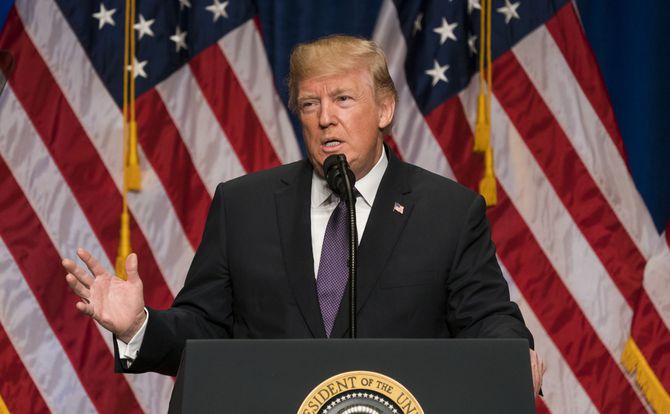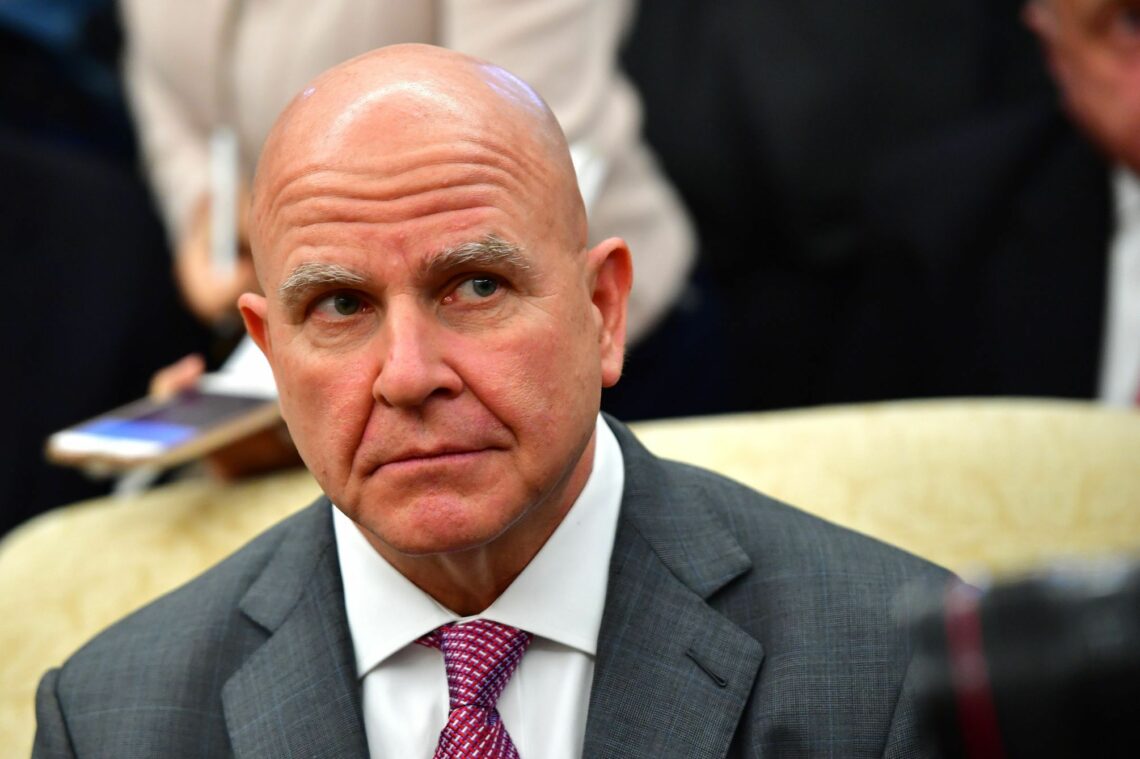The U.S. and the new great power paradigm
According to the U.S.’s National Security Strategy, great power competition is back. That this is the geopolitical reality is a rare conclusion that both Republicans and Democrats agree on. The paradigm is therefore likely to outlast President Trump and shape American foreign policy for the foreseeable future.

In a nutshell
- U.S. politicians agree that great power competition has returned
- The competition’s direction has yet to be determined
- The U.S.-China rivalry will play a pivotal role for years to come
Washington is famous for adopting new foreign policy mantras that are speedily parroted around the globe. The United States’ new organizing global principle, enshrined in the Trump administration’s 2017 National Security Strategy, is that the country has entered an age of great power competition. Two years on, it appears that both major parties accept this paradigm as an accurate representation of geopolitical reality. The national elections in 2020 are unlikely to significantly change that worldview. Still, there could be some postelection developments that make a big difference in how the U.S. takes on the challenge.
Past without prologue
When the Cold War concluded, the U.S. lacked a unifying grand strategic concept. The age of the lone superpower did not last long, nor did a series of proposed frameworks spun by successive American leaders from President Bill Clinton’s era of “engagement and enlargement” to President George W. Bush’s Global War on Terrorism. In 2006, before he was elected president, Barack Obama declared that the world of great-power competition had been banished forever. None of these notions proved enduring.
While President Donald Trump’s era of great power competition may sound like just another American bumper-sticker slogan, it is assuredly not. Over the past decade and a half an American strategic consensus has steadily emerged. While Presidents Bush, Obama and Trump were very different leaders from two different political parties, each considered the same actors as the U.S.’s top threats: Russia, China, North Korea, Iran and transnational terrorism.
Over the past 15 years, an American strategic consensus has steadily emerged.
Granted, they all took different approaches to addressing these challenges – President Obama embraced the Iran nuclear deal, President Trump rejected it. And they all had other concerns on their list (climate change for President Obama, border security for President Trump). Still, each made these dangers a priority in their own way. That consistency in the view of threats to America and its allies over such an extended period is unprecedented in the post-Cold War era.
This consensus is broadly reflected in the U.S. Congress. There is, for example, strong bipartisan support for continued sanctions on Russia. Concerns over the national security threats posed by Huawei, the Chinese telecommunications manufacturer and service provider, offers another example of strong Congressional bipartisan consensus. Even in the case of Iran, where the differences between Congressional factions are perhaps the starkest, there is agreement that Tehran represents a significant challenge. The debate is over the most effective way to address the challenge.
One reason why the concept has taken root so quickly in Washington may be that it is not strictly associated with President Trump. He never articulated a clear conceptual worldview during the 2016 presidential campaign, making only two major security and foreign policy speeches highlighting the traditional Republican notion of “peace through strength” and his ambiguous campaign slogan “America First.”

Great power competition did not emerge as an organizing principle of U.S. policy until the publication of the National Security Strategy in late 2017 and the National Defense Strategy in 2018. Some of the principal contributors behind this framework were H.R. McMaster and Nadia Schadlow on the National Security Council Staff, Elbridge Colby at the Defense Department and Brian Hook, A. Wess Mitchell and Jakub Grygiel at the State Department. None of these conservative intellectuals were considered partisan or even part of the “Trump team” when they were brought into government.
It would be wrong to suggest that the National Security Strategy is not President Trump’s doctrine. It most certainly is. That has been assiduously asserted by the main authors of the strategy, who insist that they simply put the president’s thoughts into an organized concept.
That President Trump accepted and embraced the concept is not surprising. Though Mr. Trump is unquestionably an unconventional statesman, his ideas about U.S. interests and the role of American power are in line with the mainstream. In practice, he has been neither the rabid isolationist nor the reckless interventionist many had feared, nor has U.S. policy on multinational issues or international organizations departed far from that of traditional Republican administrations.
Nevertheless, that great power competition is not seen as synonymous with President Trump may in part explain why it has been so broadly adopted in the U.S. and mimicked globally among U.S. friends, allies and strategic partners.
Fight for the future
There are already signs that the notion of great power competition will outlast President Trump, even if he is not reelected in 2020. As Uri Friedman recently argued in The Atlantic, the Democratic presidential candidates have their battle cry: “Elect one of them to lead the free world; otherwise Donald Trump will irreparably unravel it.” Their critique, he argues, is that “[b]y cozying up to dictators and casting aside democratic allies abroad, and mimicking strongmen while undermining institutions at home, Trump is making the world safe for autocracy.”
None of this explicitly rejects the great power framework. Rather, opponents assert that they can manage the competition better. Moreover, there has been scant discussion of security and foreign policy by any of the campaigns.
The future direction of great power competition is far from firmly set.
The Democrats may not throw the great power paradigm overboard – but will President Trump? Some argue, including former White House officials, that the president would be unrestrained in his second term and throw off the constraints of the blueprint established in the National Security Strategy.
That apprehension might be a more credible concern if the Trump strategy was not “his” to begin with, but it is. Moreover, since President Trump is such a forceful personality, why would he feel any less constrained in the future than he does now? The president has shown no reluctance to eschew his advisors’ counsel – as he did by deciding to move the U.S. embassy to Jerusalem. If he really wanted to abandon his administration’s worldview, he would have already done so.
That said, the future direction of great power competition is far from firmly set. Within the U.S., debates abound. One argument concerns the relationship between Russia and China. Some contend that by competing with both, the U.S. is pushing them more closely together and creating more formidable competition. Others argue that fears of a Moscow-Beijing axis are overblown and anyway, the U.S. has little it can offer to wean one rival away from the other.
Another contentious issue is setting priorities. Some argue, including some administration officials, that the competition with China should take precedence over all other challenges. Others maintain that the U.S. should focus on disengaging from the Middle East. Still others contend that Europe, the Middle East and the Indo-Pacific are all equally vital to American interests and that the U.S. can ill afford to neglect any of its major competitors.
The great power paradigm is likely to outlast the 2020 elections.
The place of friends, allies and strategic partners is also a controversial issue. The U.S. seems to be in closer alignment with major allies in the Pacific – Japan and Australia and to a lesser degree India – than with those in the Middle East and Europe. In addition, some friends and allies fear a “G2” where the U.S. and China cut a grand bargain, leaving the concerns of other countries unaddressed. In contrast, others worry that the U.S. will opt for a “decoupling,” in which it settles for carving up separate spheres of interest between the U.S., Russia, and China. Still others seek to adopt positions somewhat akin to the nonaligned movement during the Cold War, hoping that they can opt out of global and regional competition.
Such issues will continue to be hotly debated regardless of who controls the White House after 2020. How they are addressed will shape the character of great power competition in the years ahead.
Another wild card is how the other powers respond to the competition. If, for example, North Korea commits to denuclearization and normalization, it would have a huge impact on the future of Northeast Asia. Likewise, if Iran abandoned an adversarial relationship with the U.S. and accepted a more comprehensive security agreement, it would dramatically affect events in the Middle East. A comprehensive U.S.-China trade agreement or a global U.S.-Russia-China arms control process might well be pivotal developments.
None of these (nor any dramatic adversarial actions) are likely to happen before the U.S. elections. All sides will probably want to see who the players are before making their next big moves – and that could well be 2021 or later.
Scenarios
The most likely scenario turns on the outcome of the U.S. elections. The prospects for President Trump’s reelection are strong. Indeed, competitors seem to be hedging to prepare for that eventuality, even as they also consider what to do if there is a president other than Mr. Trump in 2021. Whatever happens, the great power paradigm will most likely continue to apply.
The U.S. will probably stay actively engaged in Europe, the Middle East and the Indo-Pacific, even as competition with China dominates America’s strategic calculus for years to come. This contest is likely to remain unsettled for the long term, regardless of the outcome of direct negotiations between Washington and Beijing or the resolution of contentious regional issues, such as North Korea’s nuclear program or the confrontation with Iran.







